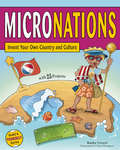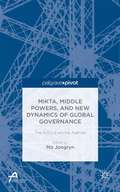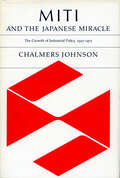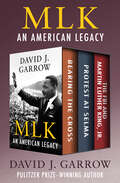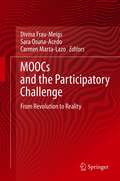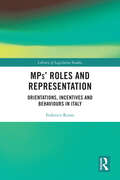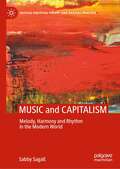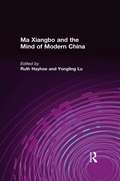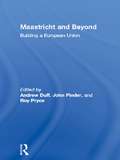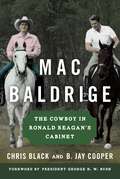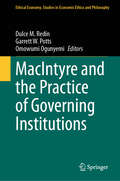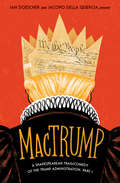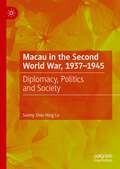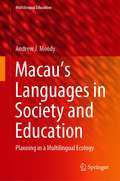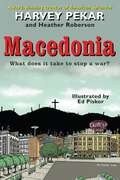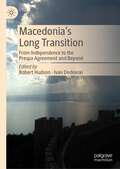- Table View
- List View
MICRONATIONS
by Chad Thompson Kathy CeceriFor anyone who's ever dreamed of ruling over their own empire, here's your chance! Micronations are imaginary countries that have a lot of the same things as real ones: laws, customs, history, and their own flags, coins, and postage stamps. Micronations: Invent Your Own Country and Culture takes readers step-by-step to create their own unique realm, using examples from real nations, micronations, and fictional lands. What makes a country a country? What symbols and systems define a country and help it function? Learn about geography and government, technology and the environment, art and culture, and the literary device of "world-building" used in works like The Hobbit and Harry Potter.Activities show readers how to create authentic-looking artifacts and documents such as maps, currency, passports, a declaration of independence, and a constitution. Kids get to invent their own language, music, games, clothing, food, and holidays to fit their micronation's tradition. Whether they create a land of time travel where every city exists in a different epoch or an underwater monarchy (motto: "Bubbles, bubbles and more bubbles") whose chief export is fish, Micronations: Invent Your Own Country and Culture will engage kids' imagination and teach make-believe rulers how the real world works.
MIKTA, Middle Powers, and New Dynamics of Global Governance: The G20’s Evolving Agenda
by Mo JongrynThis volume is the result of a 2013 conference held by the Asan Institute for Policy Studies (South Korea) on the 'middle power' countries of Mexico, Indonesia, the Republic of Korea, Turkey and Australia (MIKTA). Experts and policymakers discussed how members of the MIKTA can work to advance global governance in emerging global issue areas.
MITI and the Japanese Miracle: The Growth of Industrial Policy, 1925-1975
by Chalmers JohnsonThe focus of this book is on the Japanese economic bureaucracy, particularly on the famous Ministry of International Trade and Industry (MITI), as the leading state actor in the economy. Although MITI was not the only important agent affecting the economy, nor was the state as a whole always predominant, I do not want to be overly modest about the importance of this subject. The particular speed, form, and consequences of Japanese economic growth are not intelligible without reference to the contributions of MITI. Collaboration between the state and big business has long been acknowledged as the defining characteristic of the Japanese economic system, but for too long the state's role in this collaboration has been either condemned as overweening or dismissed as merely supportive, without anyone's ever analyzing the matter. The history of MITI is central to the economic and political history of modern Japan. Equally important, however, the methods and achievements of the Japanese economic bureaucracy are central to the continuing debate between advocates of the communist-type command economies and advocates of the Western-type mixed market economies. The fully bureaucratized command economies misallocate resources and stifle initiative; in order to function at all, they must lock up their populations behind iron curtains or other more or less impermeable barriers. The mixed market economies struggle to find ways to intrude politically determined priorities into their market systems without catching a bad case of the "English disease" or being frustrated by the American-type legal sprawl. The Japanese, of course, do not have all the answers. But given the fact that virtually all solutions to any of the critical problems of the late twentieth century—energy supply, environmental protection, technological innovation, and so forth—involve an expansion of official bureaucracy, the particular Japanese priorities and procedures are instructive. At the very least they should forewarn a foreign observer that the Japanese achievements were not won without a price being paid.
MLK: Bearing the Cross, Protest at Selma, and The FBI and Martin Luther King, Jr.
by David J. GarrowThree meticulously researched works—including Pulitzer Prize winner Bearing the Cross—spanning the life of civil rights icon Martin Luther King Jr. This collection from professor and historian David J. Garrow provides a multidimensional and fascinating portrait of Martin Luther King Jr., and his mission to upend deeply entrenched prejudices in society, and enact legal change that would achieve equality for African Americans one hundred years after their emancipation from slavery. Bearing the Cross traces King&’s evolution from the young pastor who spearheaded the 1955–56 bus boycott in Montgomery to the inspirational leader of America&’s civil rights movement, focusing on King&’s crucial role at the Southern Christian Leadership Conference. Garrow captures King&’s charisma, his moral obligation to lead a nonviolent crusade against racism and inequality—and the toll this calling took on his life. Garrow delves deeper into one of the civil rights movement&’s most decisive moments in Protest at Selma. These demonstrations led to the landmark Voting Rights Act of 1965 that, along with the Civil Rights Act of 1964, remains a key aspect of King&’s legacy. Garrow analyzes King&’s political strategy and understanding of how media coverage—especially reports of white violence against peaceful African American protestors—elicited sympathy for the cause. King&’s fierce determination to overturn the status quo of racial relations antagonized FBI director J. Edgar Hoover. The FBI and Martin Luther King, Jr. follows Hoover&’s personal obsession to destroy the civil rights leader. In an unprecedented abuse of governmental power, Hoover led one of the most invasive surveillance operations in American history, desperately trying to mar King&’s image. As a collection, these utterly engrossing books are a key to understanding King&’s inner life, his public persona, and his legacy, and are a testament to his impact in forcing America to confront intolerance and bigotry at a critical time in the nation&’s history.
MOOC Learning Platform Development
by Thomas Hanne Varun Gupta Durg Singh ChauhanThe work presented in this book is based on empirical study undertaken as a case study to understand the challenges faced in massively open online course (MOOC) based learning and experimentation to understand the challenges for presenting theoretical and practical courses. The book proposes a flexible online platform. This solution provides flexibility in distance learning processes including course enrollment, learning, evaluation, and outcome of degrees. The proposed system not only gives students freedom to choose their courses in accordance with their needs but also use earned credit towards online degrees of any university of their choice.
MOOCs and the Participatory Challenge: From Revolution to Reality
by Divina Frau-Meigs Sara Osuna-Acedo Carmen Marta-LazoThis book reports on a rather unique European experience, the pioneering ECO project for Social MOOCs (Massive Open Online Courses) and recapitulates the whole three-year process. It provides a critical perspective on the future of MOOCs in Europe and provides several comparisons with other existing models and platforms. The book contains chapters that address the major issues connected to MOOC design and implementation. The first 8 chapters cover large issues that extend beyond the ECO project experience, such as creative industries and trans-literacy; management and implementation; learning environments and platforms; dissemination; pedagogical models; interactivity and agility; gamification; evaluation; and business models. The last 3 chapters hone in on narrowly focused topics such as mobility, knowledge transfer and peer to peer evaluation. The specificities of this on-going project (funded by the EU) are: a unique collaborative pedagogy, an intercultural process (6 languages), and focus on intercreativity, the multiplying impact of e-teachers (the community of participants that was empowered to create more than 50 new MOOCs), accessibility and gamification. The book will be of interest due to its holistic approach to MOOCs and its assessment of their opportunities and their limitations. Many issues are explored and contribute to deeper understanding of the phenomenon and its transformative capacities for education and learning.
MPs’ Roles and Representation: Orientations, Incentives and Behaviours in Italy (Library of Legislative Studies #1)
by Federico RussoThis book examines the content of MPs’ activities through which parliamentarians generate representative claims. Challenging the idea that studying individual representation is a futile exercise, this book shows that looking at the opinions and behavioural patterns of parliamentarians can shed light on some important questions: What are the interests represented in parliament? How important are electoral incentives in shaping the role of representatives? What is the impact of parliamentarians’ personal characteristics? Focussing on the role played by Italian members of the Chamber of Deputies across a period of more than 20 years, the study applies role analysis to connect the normative debates on political representation to empirical studies and is underpinned by a rich data set of parliamentary activities and surveys on parliamentarians’ attitudes and opinions. The book will be of key interest to scholars and students of legislative studies, European politics, Italian studies/politics, and more broadly to comparative politics.
MULTIMOD Mark III
by Hamid Faruqee Douglas Laxton Bart TurtelboomA report from the International Monetary Fund.
MUSIC and CAPITALISM: Melody, Harmony and Rhythm in the Modern World (Critical Political Theory and Radical Practice)
by Sabby SagallThis book argues that the need for music, and the ability to produce and enjoy it, is an essential element in human nature. Every society in history has produced some characteristic style of music. Music, like the other arts, tells us truths about the world through its impact on our emotional life. There is a structural correspondence between society and music. The emergence of 'modern art music' and its stylistic changes since the rise of capitalist social relations reflect the development of capitalist society since the decline of European feudalism. The leading composers of the different eras expressed in music the aspirations of the dominant or aspiring social classes. Changes in musical style not only reflect but in turn help to shape changes in society. This book analyses the stylistic changes in music from the emergence of ‘tonality’ in the late seventeenth century until the Second World War.
Ma Xiangbo and the Mind of Modern China
by Ruth Hayhoe Yongling LuAn in-depth study of Ma Xiangbo, one of the most prominent Catholic thinkers in modern China.
Maastricht and Beyond: Building a European Union
by John Pinder Andrew Duff Roy PryceMaastricht and Beyond is a critical assessment of the European Union brought into being by the Treaty of Maastricht. A team of experts provide a clear and thorough appraisal of the main provisions of the Treaty - including the three pillared structure of Economic and Monetary Union, common foreign and security policy and home affairs and justice - showing how these elements will change the function and eventually the character of the European Union. The book draws conclusions from the Maastricht process for the next reform of the Union in 1996, and it examines the practicalities of achieving a fully-fledged federal democracy, making proposals for a constitutional settlement. Maastricht and Beyond will appeal to both informed generalists and to students and scholars who want a fresh approach to the stale arguments over Maastricht, who seek enlightenment over what the Treaty is for and who have the curiosity to look forward to 1996 and beyond.
Mac Baldrige: The Cowboy in Ronald Reagan's Cabinet
by Chris Black B. Jay CooperRonald Reagan assumed the presidency at a time when Japan and Europe, fully recovered from wartime devastation, threatened America&’s position as the number one economy in the world. Manufacturing was in decline; traditional industries were being beaten by foreign competitors; many American industries had grown complacent. President Reagan named Mac Baldrige, a successful industrialist (and card-carrying member of the Professional Rodeo Cowboys Association), Secretary of Commerce to address these economic challenges. This book recounts the Washington career of an American original during the era supporters celebrate as &“morning in America.&”
MacIntyre and the Practice of Governing Institutions (Ethical Economy #1)
by Garrett W. Potts Omowumi Ogunyemi Dulce M. RedínThis volume offers a cross-disciplinary exploration of Alasdair MacIntyre's provocative approach to governance, drawing on insights from philosophy, economics, sociology, business ethics, and organizational studies. The chapters explore how MacIntyre’s theory is applied to diverse institutional contexts, including education, medicine, and technology, addressing contemporary challenges in governance and ethical decision-making. Bringing together well-known scholars from the 16th Annual Conference of the International Society for MacIntyrean Enquiry (ISME) at the University of Navarra, this book critically examines the role of governing institutions in shaping practices and traditions. It highlights MacIntyre’s distinction between practices and institutions, addressing how these concepts influence ethical governance, leadership, and community-building in today's complex societal landscapes. Contributors explore key themes such as the development of virtues within institutions, the ethical challenges of artificial intelligence, the moral foundations of education, and the governance of professions like medicine and land management. This volume also engages with contemporary issues, offering practical insights for fostering ethical decision-making and community participation in an increasingly technocratic world. MacIntyre and the Practice of Governing Institutions is an essential resource for scholars of political philosophy, ethics, and governance, as well as for practitioners looking to navigate the ethical challenges posed by modern institutions. By examining how MacIntyre's thought applies to real-world issues, this book provides both theoretical depth and practical strategies for promoting human flourishing through virtuous governance.
MacTrump: A Shakespearean Tragicomedy of the Trump Administration, Part I
by Ian Doescher Jacopo della QuerciaFor readers craving a humorous antidote to the sound and the fury of American politics, this clever satire, written in iambic pentameter in the style of Shakespeare, wittily fictionalizes the events of the first two years of the Trump administration.No one thought that MacTrump—Lord of MacTrump Towers, Son of New York—would ascend to the highest position in the kingdom. Yet with the help of his unhappy but dutiful wife Lady MacTrump, his clever daughter Dame Desdivanka, and his coterie of advisers, MacTrump is comfortably ensconced in the White Hold as President of the United Fiefdoms, free to make proclamations to his subjects through his favorite messenger, McTweet.The Democrati, mourning the loss of their cherished leader O’Bama, won’t give up without a fight. They still remember the disastrous reign of George the Lesser, and they can see Putain’s dark influence on MacTrump. Their greatest hope is MacMueller, tasked with investigating the plot that empowered MacTrump’s rise to the throne.As Desdivanka schemes to overthrow her father’s councilors, and as Donnison and Ericson—trapped in their own Rosencrantz and Guildenstern-like storyline—prove useless to their father, MacTrump soon realizes he has no true allies. Will he be able to hold on to his throne? Only time will tell in this tragicomic tale of ambition, greed, and royal ineptitude.
Macartney at Kashgar: New Light on British, Chinese and Russian Activities in Sinkiang, 1890-1918
by Pamela Nightingale C.P. SkrineFirst published in 1973. This book describes the career of Sir George Macartney, who spent twenty-eight years at the turn of the nineteenth century as British representative in Sinkiang, China's most westerly province. Macartney was in a unique position to observe political and diplomatic manoeuvres by the key players trying to establish a sphere of influence in China's strategically vital hinterland before and during the Chinese revolution.
Macau in the Second World War, 1937-1945: Diplomacy, Politics and Society
by Sonny Shiu-Hing LoThis book offers a re-interpretation of the political history of Macau from 1937 to 1945, during which Japan and China were engulfed in the Second World War. Using an array of English and Chinese sources, the author explores the diplomatic and social landscape of war-time Macau under Portuguese colonial rule. By framing this analysis within the concept of Portuguese ‘neutrality’, the book builds on the political history of Macau and provides new insights into the role of Japanese collaborators and Communist guerrillas. Seeking to answer important questions such as why Macau was not invaded by Japan in the Second World War, and what role the Nationalist Party Government played during this period, this book presents a new approach to examining Macau’s diplomatic history. A unique read for scholars of Chinese history, this book will also appeal to those researching diplomatic and political history during the Second World War.
Macau: The Imaginary City
by Jonathan PorterThis book examines Macau as an enduring but ever-changing threshold between two worlds, the West and China. Founded by the Portuguese in 1557, Macaus geographical uniqueness has made it particularly fascinating, yet the history of Macaus cultural and social history also speaks to larger issues of cross-cultural exchange in world history. The author looks at a series of images of Macaus history and reflects on the character and meaning of the multiple cultural and social influences that met and mingled in Macau. }For many people who have encountered it, Macau makes a deep impression on the imagination, as if the city were not entirely real, or rather, not of the real world. Macau often seems dreamlike, as though it were sustained by the effort of some powerful imagination.In this evocative essay on the cultural and social history of a unique and fragile city, Jonathan Porter examines Macau as an enduring but ever-changing threshold between East and West. Founded by the Portuguese in 1557, Macau emerged as a vibrant commercial and cultural hub in the early seventeenth century. The city then gradually evolved, flourishing first as a Eurasian community in the eighteenth century and then as an increasingly Chinese city in the nineteenth century. Macau became a modern manufacturing center in the late twentieth century and is now destined for reversion to the Peoples Republic of China in 1999.The city was the meeting ground for many cultures, but central to this fascinating story is the encounter between an expansive, seaborne Portugese empire and the introspective, closed world of imperial China. Unlike the other great colonial port cities of Asia, Macau did not provide natural access to the hinterland, and this geographical and historical isolation (there is still no airline or railroad that can take you to Macau) has fostered a unique balance of cultural influences that survives to this day. Poised on the periphery of two worlds, an isolated but global crossroads, Macaus unique cultural and social melange illuminates crucial issues of cross-cultural exchange in world history.Establishing Portugal and China as distinct cultural archetypes, Porter then examines the subsequent encounters of East and West in Macau from the sixteenth to the twentieth centuries. Avoiding the traditional linear chronological approach, Porter instead looks at a series of images from the citys history and culture, including its place in the geographical context of the South China coast; the architecture of Macau, which reflects the memories of its historical passages; the variety of people who crossed the threshold of Macau; the material culture of everyday life; and the spiritual topography resulting from the encounters of popular religious movements in Macau.Jonathan Porter concludes his literary journey by reflecting on the character and meaning of the many cultural and social influences that have met and mingled in Macau. His words and photographs eloquently capture the essence of a place that seems too ephemeral to be real, too captivating to be anything but an imaginary city. }
Macau’s Languages in Society and Education: Planning in a Multilingual Ecology (Multilingual Education #39)
by Andrew J. MoodyThis book examines the role of English within education and society in the quickly changing city of Macau. Macau’s multilingual language ecology offers the unique opportunity to examine language planning and policy issues within a small speech community. The languages within the ecology include several Chinese varieties, such as Cantonese, Putonghua and Hokkien, European languages like Portuguese and English, and a number of Asian languages that include, among others, Burmese, Filipino languages, Japanese, Timorese, etc. As the smallest city in South China's Pearl River Delta, Macau has sought to maintain cultural and linguistic independence from its larger neighbours, and independence has been built upon an historic commitment to multilingualism and cultural plurality. As economic development and globalisation offer new opportunities to a growing middle class, the sociolinguistics of a small society constrain and influence the language policies that the territory seeks to implement. Macau's multilingual and pluralistic response to language needs within the territory echoes historical responses to similar challenges and suggests that small communities function sociolinguistically in ways that differ from larger communities.
Macbeth and All That (The And All That Series)
by Allan BurnettThe illustrated true history of the 11th-century Scottish king made famous by William Shakespeare&’s play.Macbeth And All That is a real-life adventure packed with historical facts about Scotland&’s infamous king. Journey back to the dark ages where the throne is splattered in blood and death lurks in every corner. Join Macbeth&’s quest for power—and find out why the truth is very different from the way Shakespeare told it. Groaning with great illustrations, Macbeth And All That is a chilling murder mystery that will keep you guessing to the very end!
Macdonald at 200: New Reflections and Legacies
by Roger Hall Patrice DutilA modern look at a classic leader. Macdonald at 200 presents fifteen fresh interpretations of Canada’s founding Prime Minister, published for the occasion of the bicentennial of his birth in 1815. Well researched and crisply written by recognized scholars and specialists, the collection throws new light on Macdonald’s formative role in shaping government, promoting women’s rights, managing the nascent economy, supervising westward expansion, overseeing relations with Native peoples, and dealing with Fenian terrorism. A special section deals with how Macdonald has (or has not) been remembered by historians as well as the general public. The book concludes with an afterword by prominent Macdonald biographer Richard Gwyn. Macdonald emerges as a man of full dimensions — an historical figure that is surprisingly relevant to our own times.
Macedonia: What Does It Take to Stop a War?
by Harvey Pekar Heather Roberson“Pekar has proven that comics can address the ambiguities of daily living, that like the finest fiction, they can hold a mirror up to life.”–The New York TimesFor years Heather Roberson, a passionate peace activist, has argued that war can always be avoided. But she has repeatedly faced counterarguments that fighting is an inescapable consequence of world conflicts. Indeed, Heather finds proving her point to be a little tricky without examples to bolster her case. So she does something a little crazy: She sets out for far-off Macedonia, a landlocked country north of Greece and west of Bulgaria, to explore a region that has edged–repeatedly–close to the brink of violence, only to refrain. In the process–and as vividly portrayed by the talented duo of Harvey Pekar and Ed Piskor–Heather is tangled in red tape, ripped off by cabdrivers and hotel clerks, hit on by creepy guys, secretly photographed, and mistaken for a spy. She also creates unlikely friendships, learns that getting lost means seeing something new, and makes some startling discoveries. War is hell and peace is difficult–but conflict is always necessary. “Harvey Pekar wrestles the kind of things most comic book heroes wouldn’t touch with a laser blaster.”–Cleveland Plain Dealer“A visit with Harvey Pekar . . . will cause you to reexamine your own life . . . just as the greatest literature will.”–The Austin Chronicle“Pekar lets all of life flood into his panels: the humdrum and the heroic, the gritty and the grand.”–The New York Times Book Review
Macedonia’s Long Transition: From Independence to the Prespa Agreement and Beyond
by Robert Hudson Ivan DodovskiThis book provides a broad, interdisciplinary analysis of events impacting on North Macedonia since its independence, particularly during the last decade. In the past thirty years, the country has gone through deep political, social and economic transition, along with a name change from ‘Macedonia’ to the ‘Republic of North Macedonia’ following the Prespa Agreement signed with Greece. The contributors consider Macedonia’s challenges, its multi-ethnic make-up and its ambition to enter the European mainstream through the auspices of the European Union and NATO. The volume includes chapters on international politics and North Macedonia’s place in the region’s security architecture as well as the difficulties of the privatisation of socially owned enterprises, political corruption, state capture and backsliding. The book also covers the controversial ‘Skopje 2014’ project in addition to the impact of migration along the ‘Balkan Route’ and the current wranglings with Bulgaria over identity politics.
Machiavelli
by Thomas Babington MacaulayOne hypothesis is that Machiavelli intended to practice on the young Lorenzo de' Medici a fraud similar to that which Sunderland is said to have employed against James II, and that he urged his pupil to violent and perfidious measures, as the surest means of accelerating the moment of deliverance and revenge.
Machiavelli and the Modern State
by Alissa M. ArditoThis book offers a significant reinterpretation of the history of republican political thought and of Niccol- Machiavelli's place within it. It locates Machiavelli's political thought within enduring debates about the proper size of republics. From the sixteenth century onward, as states grew larger, it was believed only monarchies could govern large territories effectively. Republicanism was a form of government relegated to urban city-states, anachronisms in the new age of the territorial state. For centuries, history and theory were in agreement: constructing an extended republic was as futile as trying to square the circle; but then James Madison devised a compound representative republic that enabled popular government to take on renewed life in the modern era. This work argues that Machiavelli had his own Madisonian impulse and deserves to be recognized as the first modern political theorist to envision the possibility of a republic with a large population extending over a broad territory.
Machiavelli and the Orders of Violence
by Yves WinterNiccolò Machiavelli is the most prominent and notorious theorist of violence in the history of European political thought - prominent, because he is the first to candidly discuss the role of violence in politics; and notorious, because he treats violence as virtue rather than as vice. In this original interpretation, Yves Winter reconstructs Machiavelli's theory of violence and shows how it challenges moral and metaphysical ideas. Winter attributes two central theses to Machiavelli: first, violence is not a generic technology of government but a strategy that tends to correlate with inequality and class conflict; and second, violence is best understood not in terms of conventional notions of law enforcement, coercion, or the proverbial 'last resort', but as performance. Most political violence is effective not because it physically compels another agent who is thus coerced; rather, it produces political effects by appealing to an audience. As such, this book shows how in Machiavelli's world, violence is designed to be perceived, experienced, remembered, and narrated.
